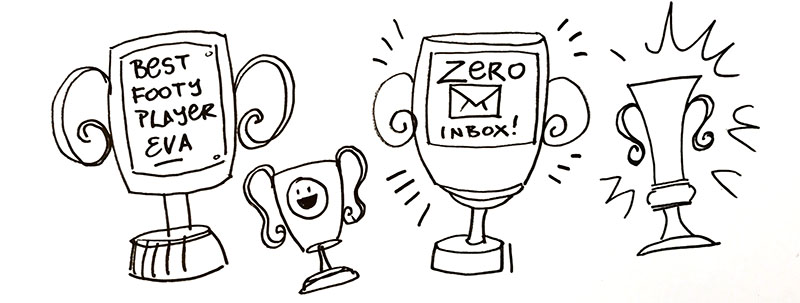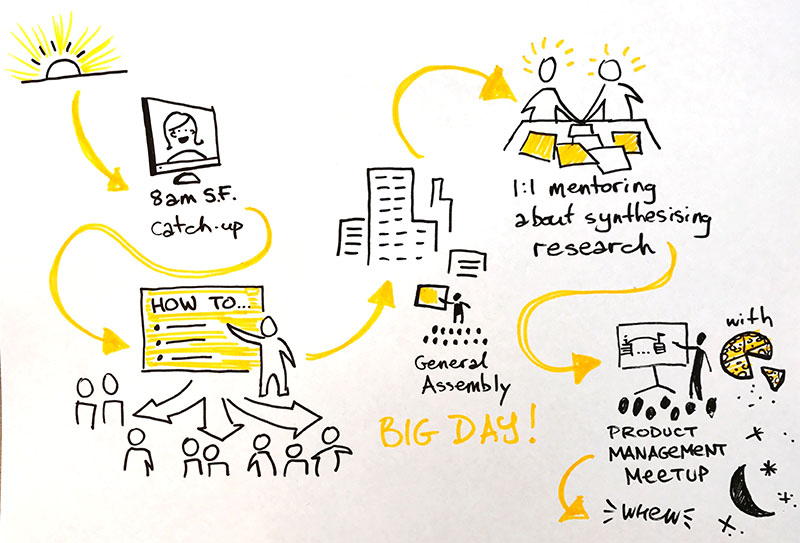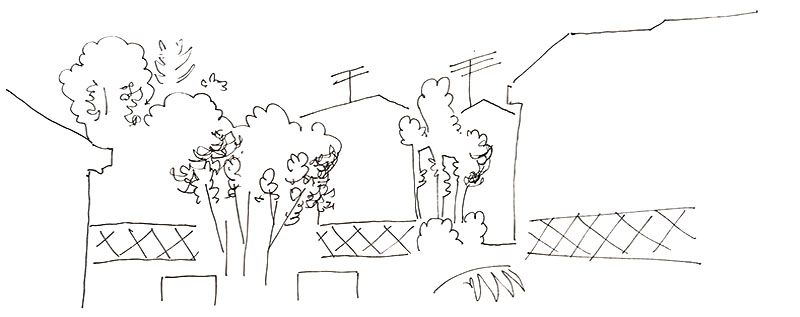Looking to change up how you draw the same thing all the time? Or to boost the variety and style of what you draw? I got you: try this easy and effective SNAILS method.
If I got a dollar for every light bulb that I drew in my work, I’d be… well, I wouldn’t be rich, but let’s just say that the beers would be on me next time!
The point is: if you do any kind of sketching regularly, you might find yourself drawing the same old things in the same old ways, and you might be after some fresh ways to increase the visual variety of what you’re sketching. Whether it’s sketching for yourself (e.g. sketchnoting, urban sketching) or sketching for others (e.g. scribing, storyboarding, graphic recording, graphic facilitation), it can be easy to feel in a bit of a rut when it comes to what you draw and how you draw.
I got to this point fairly often a while back, so I started working on various ways I could spice up what I was drawing, to keep it more interesting and more meaningful. I’ve refined these various ways into an easy-to-remember method: SNAILS! I had the joy and honour of sharing this SNAILS technique as part of a workshop on using visual metaphor to explore and solve problems at the EuViz conference in Denmark, 2018.
SNAILS – An easy-to-remember set of sketching prompts
No, I’m not saying you draw snails on everything (although, hey, that might be your style). SNAILS stands for 6 creative prompts, or aspects you can think about changing whenever you draw something, to add more creativity and meaning.
SNAILS stands for:
- Shape
- Number
- Angle
- Identity
- Line
- Size
The SNAILS approach is a great way to take something you’ve already drawn and try a little bit of ‘visual first aid’ to help it visually ‘work’ a bit better. It’s also a good way to think more creatively about the topic, object, or concept you’re sketching. Let’s take a look at each of the 6 ways…
Shape
Changing the shape of an object can change its meaning, especially if it’s a visual metaphor for something. In the light bulb examples below, the shape of the glass changes to mimic other objects (e.g. a deflated balloon), to show what type of idea it represents.
Number
Sometimes adding more of the same object can add some nuance to what you’re showing, like one fish amongst a whole school of fish that looks different, or one bright idea amongst lots of ‘dim’ ones. A dozen fresh free-range ideas, anyone? 😉
Angle
Changing the angle – or your point of view – can enrich the meaning of the thing you’re drawing. It can give it more character (e.g. showing it viewed from slightly below looking up), or indicate that something is not quite right (showing an object upside down or backward), or movement (slanted to look like it’s moving fast).
Identity
If you’ve been following Presto Sketching for a while, you’ll probably know by now that I like putting faces on anything and everything. By putting a face on an inanimate object, you give that object an identity and an opinion. What type of face you give it obviously shows what personality or point of view it has, no matter how subtle or obvious the face is.
Line
This prompt is straight from art school. The nature of the line we draw says so much about what it is we’re drawing. Thin trembly lines indicate fragility or brittleness. Thick flowy lines indicate confidence. But you can take this further in so many different creative ways. Here are a few examples:
Size
Lastly, by playing with the size of what we draw, we can show how important it is in relation to what’s around it. For this to work, you usually need something else in the picture to give the particular object scale, for comparison.
Share your sketches!
I hope this SNAILS method has given you some ideas about adding some more variety to what you draw. Try it today, whether it’s on a whiteboard in a meeting, or in your sketchbook, or as part of live scribing. And as always, I’m keen to see how you use these methods in your own sketching, so feel free to share it on the socials and tag it with #prestosketching, or tag @prestosketching on or Instagram.









